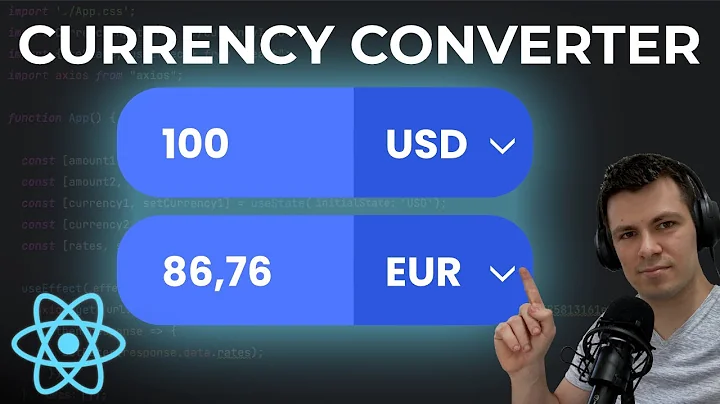Mastering Shopify Liquid: 5-Minute Crash Course + Resources
Table of Contents
- Introduction
- Understanding the Structure of Shopify Teams
- Working with Liquid in Shopify
- The Basics of Liquid
- Liquid as a Templating Language
- Liquid and Ruby
- Tags, Objects, and Filters
- Using Tags in Liquid
- Conditional Statements
- Loops and Iteration
- Functionality in Liquid
- Understanding Objects in Liquid
- Accessing Object Properties
- Examples of Objects in Shopify
- Applying Filters in Liquid
- Modifying Output Strings
- Popular Filters in Liquid
- Resources for Learning Liquid
- Liquid Documentation
- Liquid Cheat Sheet
- Shopify Theme Development Book
- Conclusion
Working with Liquid in Shopify
Liquid is a crucial component of any Shopify theme as it is the language used to provide dynamic data. In this article, we will delve into the world of Liquid and explore how it works within the Shopify ecosystem.
Introduction
Before we dive deep into the details, it's important to understand the structure of Shopify teams. This knowledge will provide a foundation for comprehending Liquid and its role in Shopify development.
Understanding the Structure of Shopify Teams
Shopify is built on Ruby, but when building a Shopify theme, you won't be writing Ruby code directly. Instead, you will work with Liquid, which is a templating language. Liquid acts as a bridge between your code and the dynamic data provided by Shopify. It handles the rendering of dynamic content, making it essential to grasp how Liquid functions.
The Basics of Liquid
- Liquid as a Templating Language
- Liquid and Ruby
- Tags, Objects, and Filters
Liquid as a Templating Language
Liquid is not a programming language like Ruby; it is specifically designed as a templating language. This means that behind the scenes, Shopify converts your Liquid code to Ruby to execute the necessary actions. However, when writing Liquid code, Shopify's system recognizes that you are working with dynamic data that needs to be rendered.
Liquid and Ruby
Since Shopify is built on Ruby, it's useful to understand some of the similarities and differences between the two. While Liquid isn't a programming language itself, it shares similarities with programming languages. For example, Liquid uses tags, objects, and filters to load dynamic content.
Tags, Objects, and Filters
In Liquid, tags are akin to programming logic and control flow structures. You can use tags to write if conditions, for loops, and other essential programming constructs. Shopify's documentation provides a comprehensive list of available tags and how to use them effectively.
Objects, on the other hand, represent the dynamic data provided by Shopify. Objects, such as products and collections, have various properties that you can access using dot notation. For example, product.title retrieves the title property of a product.
Liquid filters allow you to modify output strings. You can apply filters to strings using the pipe symbol (|). For instance, the "append" filter appends additional text to a word. Shopify offers an extensive range of filters, each serving a different purpose.
Using Tags in Liquid
- Conditional Statements
- Loops and Iteration
- Functionality in Liquid
Conditional Statements
Conditional statements in Liquid allow you to make decisions based on specific conditions. You can write if conditions using the familiar syntax of if-else statements. For example, if you want to get the username associated with an e-commerce platform like Shopify, you can write an if condition like this: {% if username == person %}.
Loops in Liquid enable you to iterate over a collection of items. They provide a convenient way to repeat a certain block of code until a specific condition is met. Shopify's documentation offers comprehensive guidance on using loops effectively.
Functionality in Liquid encompasses additional features that make working with dynamic content more convenient. These functionalities include math calculations, string manipulations, and more. Exploring Shopify's documentation will give you a deeper understanding of the various functionalities Liquid offers.
Understanding Objects in Liquid
- Accessing Object Properties
- Examples of Objects in Shopify
Accessing Object Properties
To access properties of objects in Liquid, you can use dot notation. For example, product.price retrieves the price property of a product. Understanding how objects and their properties are structured is vital for accessing and displaying the desired information in your Shopify theme.
Examples of Objects in Shopify
Shopify provides a range of objects that can be accessed in Liquid. These objects include products, collections, and variants, among others. Familiarizing yourself with the available objects and their properties will help you leverage the power of Liquid effectively.
Applying Filters in Liquid
- Modifying Output Strings
- Popular Filters in Liquid
Modifying Output Strings
Filters in Liquid allow you to modify the output strings generated by your code. By applying filters, you can transform, append, remove, or perform various other manipulations on strings. For example, using the append filter will append additional text to a word.
Popular Filters in Liquid
Liquid offers a wealth of powerful filters that can greatly enhance your Shopify theme development. Some widely used filters include prepend, remove, escape, and many others. Exploring Shopify's documentation and referring to the Liquid cheat sheet will help you make the most of these filters.
Resources for Learning Liquid
- Liquid Documentation
- Liquid Cheat Sheet
- Shopify Theme Development Book
Liquid Documentation
Shopify's Liquid documentation provides detailed information on each aspect of using Liquid in Shopify theme development. The documentation covers everything from basic syntax to advanced techniques. It's an essential resource for mastering Liquid.
Liquid Cheat Sheet
The Liquid cheat sheet is a handy reference that lists all the tags, objects, filters, and other features available in Liquid. It serves as a quick guide when you need to search for a specific operator, control flow structure, or filter. Keeping this cheat sheet accessible will save you time during development.
Shopify Theme Development Book
For those looking to delve deeper into Shopify theme development, the Shopify Theme Development book is an excellent resource. While this recommendation is not a paid promotion, the book offers comprehensive insights into building robust and efficient Shopify themes. It covers various aspects of theme development and includes updated content.
Conclusion
In this article, we explored the fundamentals of working with Liquid in Shopify. We learned that Liquid acts as a bridge between your code and the dynamic data provided by Shopify. By understanding the basics of Liquid, such as tags, objects, and filters, you can create more dynamic and personalized Shopify themes. Remember to refer to Shopify's documentation, cheat sheets, and additional resources to further enhance your Liquid skills. Happy Shopify theme development!
Highlights
- Liquid is a templating language used in Shopify for rendering dynamic data.
- Tags, objects, and filters are the building blocks of Liquid.
- Conditional statements and loops enable complex logic in Liquid.
- Objects represent dynamic data in Shopify, and their properties can be accessed using dot notation.
- Filters modify output strings, allowing for various string manipulations.
- Shopify provides documentation, cheat sheets, and a theme development book to aid in learning Liquid.
FAQ
-
Q: Can I use Liquid in languages other than Ruby?
- A: While Liquid is primarily used in Ruby-based platforms like Shopify, it can also be integrated into other programming languages through libraries and plugins.
-
Q: Are there any limitations to using Liquid in Shopify?
- A: Liquid in Shopify offers extensive functionality, but there may be some limitations when it comes to complex programming tasks. In such cases, integrating custom JavaScript or server-side logic may be necessary.
-
Q: Is there a difference between Shopify Liquid and general-purpose templating languages?
- A: Yes, Shopify's implementation of Liquid has its own syntax and features tailored for rendering dynamic content specific to Shopify themes. However, the core concepts of Liquid remain consistent across different implementations.
-
Q: Can Liquid be used outside of Shopify development?
- A: Yes, Liquid has gained popularity beyond Shopify and is used in other web development frameworks and content management systems for templating dynamic content.
-
Q: How can I improve my understanding of Liquid tags and filters?
- A: The best way to grasp the full range of Liquid tags and filters is by exploring the official Liquid documentation and experimenting with practical examples in your Shopify theme development projects.






















